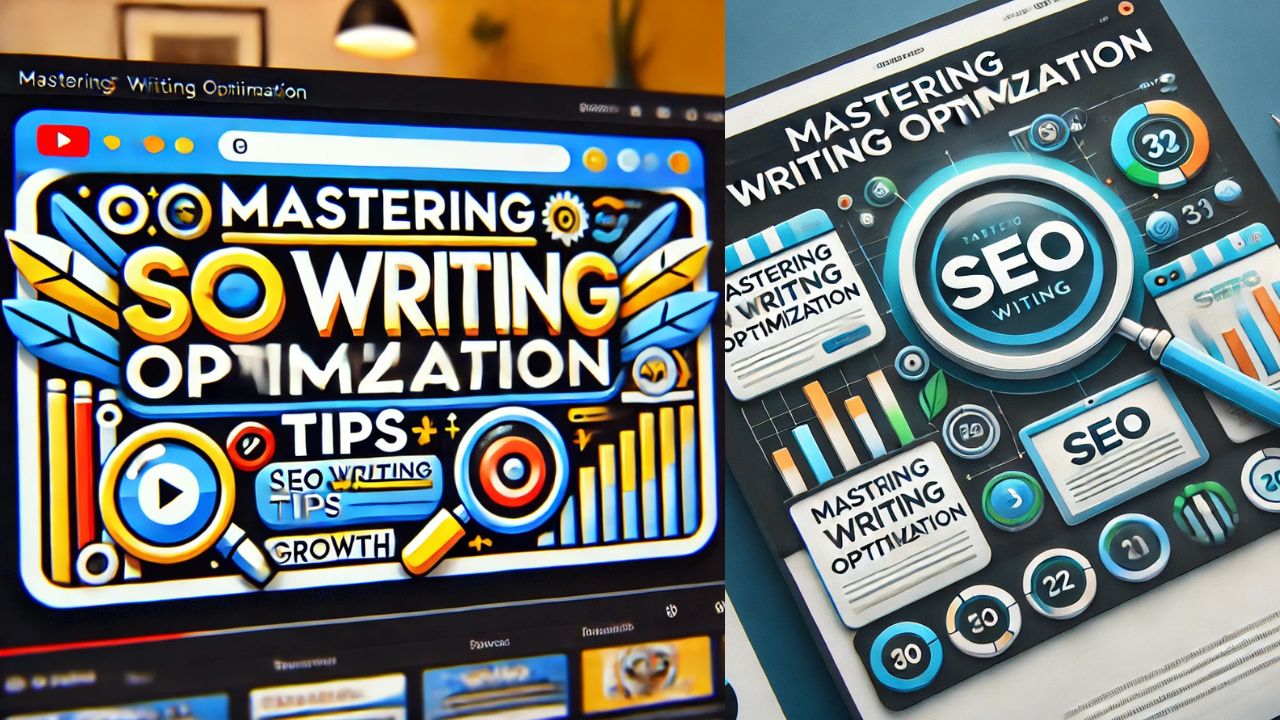In the digital world, where content is king, writing that ranks high on search engines can feel like chasing a moving target. This is where SEO Writing Optimization comes into play. It bridges the gap between creating engaging content and ensuring that it’s discoverable by search engines. If you’ve ever wondered how to get your blog or website to the top of search results, you’re in the right place. In this guide, we’ll dive into the essentials of SEO Writing Optimization, breaking it down into simple, actionable steps.

Table of Contents
What is SEO Writing Optimization?
SEO Writing Optimization is the process of crafting content that is both user-friendly and optimized for search engines. It involves using targeted keywords, structuring your content properly, and ensuring it aligns with search engine algorithms. The ultimate goal is to make your content visible to your target audience while delivering value.
For example, if you own a blog about gardening and want people searching for “best gardening tips” to find your post, SEO Writing Optimization ensures that your content matches their intent and ranks higher on search engine result pages (SERPs).
Why is SEO Writing Optimization Important?
- Increases Visibility: Optimized content ranks higher in search engines, making it more likely for users to click on your site.
- Drives Organic Traffic: Instead of paying for ads, SEO Writing Optimization brings in visitors naturally.
- Improves User Experience: Properly optimized content is easier to read, navigate, and understand.
- Boosts Credibility: A high-ranking site often appears more trustworthy to users.
- Supports Business Goals: Whether it’s generating leads, increasing sales, or building brand awareness, SEO plays a critical role.
Key Elements of SEO Writing Optimization
To master SEO Writing Optimization, focus on the following aspects:
1. Keyword Research
Keywords are the backbone of SEO. Start by understanding what your audience is searching for. Tools like Google Keyword Planner, SEMrush, and Ahrefs can help you find the right keywords. For instance, if you’re writing about fitness, keywords like “home workout tips” or “best exercises for beginners” might be relevant.
Pro Tip: Use long-tail keywords (phrases with three or more words). They’re less competitive and often match user intent better.
2. Content Structure
Organized content not only helps readers but also search engines. Use headings (H1, H2, H3) to divide your content into digestible sections.
- H1: Main title of your content
- H2: Subheadings for major sections
- H3: Subsections within H2 headings
For instance, in this guide, “What is SEO Writing Optimization?” is an H2, and “Key Elements of SEO Writing Optimization” is another.
3. Compelling Titles and Meta Descriptions
Your title is the first thing users see in search results. Make it catchy, clear, and include your primary keyword. The meta description is a brief summary (under 160 characters) that entices users to click.
Example:
- Title: “10 Tips for SEO Writing Optimization to Boost Your Traffic”
- Meta Description: “Learn how to master SEO Writing Optimization with these easy-to-follow tips and strategies.”
4. Quality Content
Content is at the heart of SEO Writing Optimization. Create articles that answer users’ questions and provide real value. Avoid fluff and focus on actionable insights.
- Use short paragraphs for readability.
- Include bullet points and numbered lists where appropriate.
- Use visuals like images, infographics, and videos to break up text and keep readers engaged.
5. Keyword Placement
Strategically place your primary keyword (SEO Writing Optimization) throughout the content. Here’s how:
- In the title
- Within the first 100 words
- In subheadings
- Naturally throughout the body
- In the meta description
- In the URL
Avoid Overstuffing: Don’t force keywords where they don’t fit. Always prioritize natural flow.
6. Internal and External Links
- Internal Links: Link to other pages on your website to keep readers engaged and boost your site’s structure.
- External Links: Link to reputable sources for additional credibility.
7. Mobile-Friendly Design
With most searches now happening on mobile devices, having a mobile-friendly site is non-negotiable. Ensure your content is easy to read on smaller screens.
8. Fast Loading Speed
Page speed is a ranking factor. Optimize images, reduce unnecessary scripts, and use caching tools to ensure your site loads quickly.
9. Use Alt Text for Images
Search engines can’t read images, but they can read alt text. Describe your images with relevant keywords.
10. Update Content Regularly
Keep your content fresh. Update statistics, add new insights, and refine outdated information to stay relevant.
Common Mistakes to Avoid
- Keyword Stuffing: Overusing keywords makes your content look spammy and can lead to penalties.
- Ignoring User Intent: Ensure your content answers what users are searching for.
- Poor Readability: Avoid long paragraphs and overly complex language.
- Skipping Analytics: Use tools like Google Analytics to track performance and make improvements.
- Not Promoting Content: Share your content on social media, newsletters, and other platforms.
How to Measure the Success of SEO Writing Optimization
- Organic Traffic: Check how many visitors are coming to your site from search engines.
- Rankings: Monitor your keyword rankings using tools like Ahrefs or SEMrush.
- Engagement Metrics: Look at bounce rate, time on page, and pages per session.
- Conversions: Measure how many visitors take desired actions, like signing up or purchasing.
Conclusion
Mastering SEO Writing Optimization is not just about pleasing search engines—it’s about creating content that resonates with your audience. By focusing on quality, understanding your readers’ needs, and following the best practices outlined in this guide, you can boost your content’s visibility and impact. Remember, SEO is an ongoing process. Keep learning, experimenting, and adapting to stay ahead in the game.
FAQ
What is the difference between SEO and SEO Writing Optimization?
SEO is a broad term that includes all strategies to improve website visibility on search engines, while SEO Writing Optimization focuses specifically on crafting content that ranks well.
How often should I use my primary keyword?
Use your primary keyword naturally throughout the content, aiming for a keyword density of 1-2%.
Can I rank without SEO Writing Optimization?
It’s possible, but very difficult. Optimized content significantly improves your chances of ranking.
How long does it take to see results from SEO Writing Optimization?
It varies but generally takes 3-6 months to see significant improvements.



